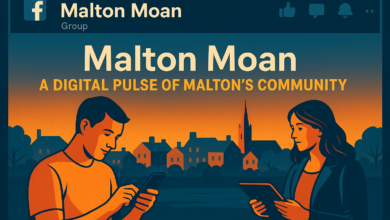Top 5 Emerging Marketing Trends Every Brand Should Watch
The marketing landscape has always been dynamic, but in 2025, the pace of change is faster than ever. What worked yesterday might not cut it tomorrow. As new technologies emerge and consumer behaviors evolve, brands need to stay agile, informed, and open to experimentation.
Whether you’re part of a large marketing team or running a solo brand, keeping an eye on what’s next can be the difference between thriving and falling behind. These five trends aren’t just buzz they’re shaping the future of how we connect, convert, and retain customers in an increasingly digital-first world.
1. Hyper-Personalization Through Predictive AI
Personalization has long been a goal in marketing, but AI is taking it to the next level. With access to user data and machine learning algorithms, brands can now deliver hyper-personalized content in real time. Think emails tailored to individual browsing habits, dynamic product recommendations, and websites that change based on who’s visiting.
Predictive AI helps marketers not only understand what a customer is likely to want, but when and how they want it. This level of customization improves conversion rates and customer satisfaction across all touchpoints.
2. Content Built for Micro-Moments
People today want answers, not advertising and they want them fast. This has led to a rise in “micro-moments,” those brief but intent-rich interactions where users turn to their device to learn something, do something, or buy something.
To capitalize on these moments, brands are creating quick, helpful content that answers specific questions. One example is using a well-designed reference template to streamline business communication or provide value in a downloadable format. These assets serve users instantly, fostering trust and loyalty without overt selling.
3. Voice Search and Conversational Content
With the proliferation of smart speakers and voice-enabled mobile assistants, how people search is changing. Queries are becoming more conversational think “What’s the best coffee shop near me?” rather than just “coffee shop London.”
This shift is pushing marketers to rethink how they structure content. Instead of keyword stuffing, brands are focusing on natural language, FAQs, and schema markup to ensure they appear in voice search results. Conversational content isn’t just SEO-friendly it’s human-friendly, making brands more approachable and easier to engage with.
4. Authenticity Over Aesthetic in Social Media
The perfectly polished Instagram feed is fading in favor of something more real. Gen Z and younger millennials crave authenticity, transparency, and values that align with their own. That means less stock photography and more behind-the-scenes videos, live Q&As, and unfiltered user-generated content.
This shift has also given rise to the “deinfluencing” movement, where creators talk candidly about what not to buy. Brands that embrace vulnerability, admit missteps, and showcase their human side are gaining stronger followings and deeper engagement.
5. Sustainability and Ethical Marketing
Consumers are increasingly voting with their wallets, favoring brands that care about people and the planet. This goes beyond just using eco-friendly packaging it’s about purpose-driven branding, transparent sourcing, and ethical labor practices.
Marketers are responding by not only communicating their company’s values but embedding them into every aspect of the customer journey. From inclusive advertising to carbon-neutral shipping options, ethical marketing is no longer a niche it’s expected.




